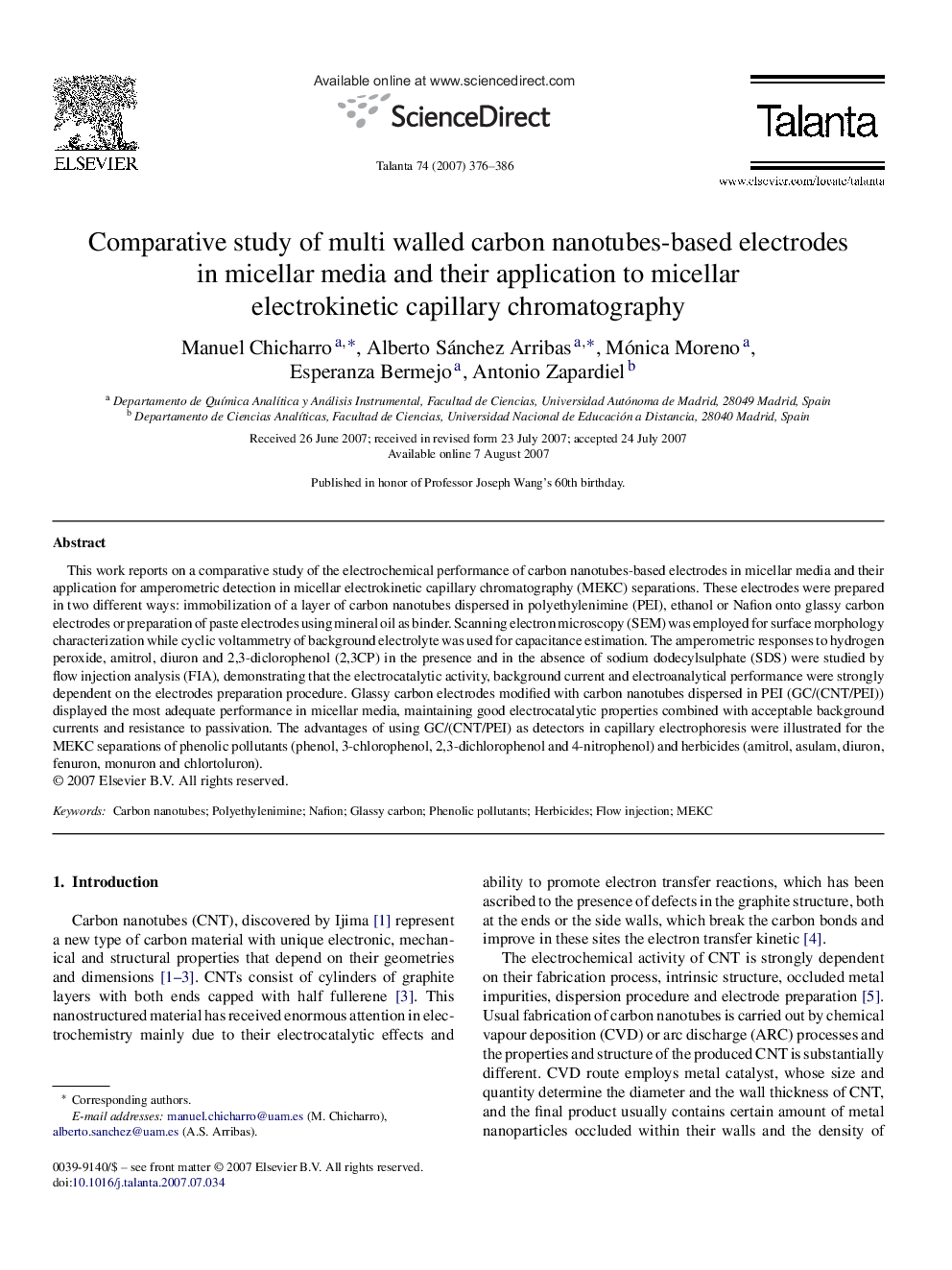| Article ID | Journal | Published Year | Pages | File Type |
|---|---|---|---|---|
| 1245744 | Talanta | 2007 | 11 Pages |
This work reports on a comparative study of the electrochemical performance of carbon nanotubes-based electrodes in micellar media and their application for amperometric detection in micellar electrokinetic capillary chromatography (MEKC) separations. These electrodes were prepared in two different ways: immobilization of a layer of carbon nanotubes dispersed in polyethylenimine (PEI), ethanol or Nafion onto glassy carbon electrodes or preparation of paste electrodes using mineral oil as binder. Scanning electron microscopy (SEM) was employed for surface morphology characterization while cyclic voltammetry of background electrolyte was used for capacitance estimation. The amperometric responses to hydrogen peroxide, amitrol, diuron and 2,3-diclorophenol (2,3CP) in the presence and in the absence of sodium dodecylsulphate (SDS) were studied by flow injection analysis (FIA), demonstrating that the electrocatalytic activity, background current and electroanalytical performance were strongly dependent on the electrodes preparation procedure. Glassy carbon electrodes modified with carbon nanotubes dispersed in PEI (GC/(CNT/PEI)) displayed the most adequate performance in micellar media, maintaining good electrocatalytic properties combined with acceptable background currents and resistance to passivation. The advantages of using GC/(CNT/PEI) as detectors in capillary electrophoresis were illustrated for the MEKC separations of phenolic pollutants (phenol, 3-chlorophenol, 2,3-dichlorophenol and 4-nitrophenol) and herbicides (amitrol, asulam, diuron, fenuron, monuron and chlortoluron).
